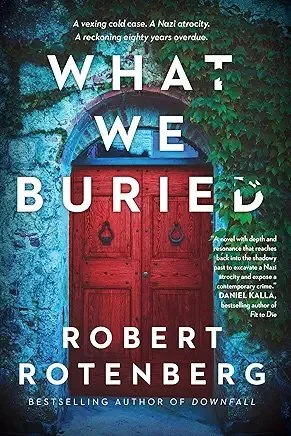
Other Writing
sim•i•le / ˈsiməlē/
noun
a figure of speech involving the comparison of one thing with another thing of a different kind, used to make a description more emphatic or vivid. (e.g., as brave as a lion, crazy like a fox).
Source: Oxford University Press
Similes add punch to your prose, enlivening your storytelling and engaging your readers. The right simile can reveal character, enhance setting, evoke emotion, and more—and do it by showing rather than telling. No one writes them better than Raymond Chandler, to my mind the king of the simile. Here’s just one of his masterful similes from The Big Sleep:
“A few locks of dry, white hair clung to his scalp, like wildflowers fighting for life on a bare rock.”
An unexpected comparison. Two things that seem totally unrelated, yet in a good simile, they work.
Here are some tips to writing effective similes.
Tip #1
Paint a picture.
A great simile is cinematic. You can see it. Here’s an example from my sixth novel Downfall. Jember Roshan, a father of twin babies, is forced to ride his bicycle to work in the dark early on a cold winter Sunday morning.
There were streetlights, but they were far apart. He kept riding from light to dark and back into the light, the white steam of his breath appearing and disappearing in front of his face, like some kind of magic act at the circus.
Tip #2
Add drama.
The best similes are dramatic. They’re all show, no tell. In this example from my seventh novel What We Buried, the main character has been is shot in his driveway only steps from his front door.
Kennicott stared at the glimmering cement that his landlord Mr. Federico watered down every night, shimmer in the motion-detector light. And the rivulets of red blood, leaching out across it, like an evil spider, reading to strike a final deadly blow.
Tip #3
Leverage your own experience.
Many of the most successful similes draw upon common things that we all feel, can relate to, or fear. Like this one from my second novel The Guilty Plea.
DiPaulo checked his office door to triple ensure it was closed, like a nervous traveller checking and re-checking that his passport is in his breast pocket.
Tip #4
Use a simile to end a scene or a chapter on a dynamic note.
A dynamic simile can put a powerful spin on the last line of a scene or chapter. The kind that readers pause to appreciate, even as they turn the page to the next scene or chapter. In my latest novel One Minute More, I used a simile to punctuate the moment when my protagonist is being rescued from a sinking ship by helicopter above him.
He took one last look down. The dead man on the dead boat was being swallowed up the water. The ropes around Greene squeezed his chest tight like an anxious lover’s embrace. He lolled his head back and gazed up to the living sky.
Tip #5
Avoid clichéd similes.
Don’t use clichés like as brave as a lion or crazy like a fox (both of which are so clichéd they’re the examples given in the very definition of word simile, as noted above.)
Tip #6
Write long, cut short.
Agents, editors, readers — all look for confidence in a writer, like the restless audience in an overheated summer stock theater at the premier performance of a new play looks for signs of confidence in an unknown actor when she slips on her first entrance on the stage for Act One.
The above is an intentionally massively overwritten example. Start long to paint the image in your mind, then edit down. How would you cut this overwritten example down to size?
Tip #7
Write a simile sequence.
At the climax of John le Carré’s three-part Smiley series, he uses a sequence of similes as Karla, Smiley’s arch enemy, walks across the bridge from the East to the West. See how John le Carré uses similes to build one of the most memorable scenes in all his novels.
One small man, in a worker’s half-length coat, with a worker’s satchel slung across his little chest, walking neither fast nor slowly, but walking like a man who walked a lot.
Like a chasm, the jagged skyline beckoned to him yet again, the swirling snow made it an inferno. For a second longer, Smiley stood on the brink at the smouldering river’s edge.
He realized he had no real name by which to address his enemy: only a codename and a woman’s at that. Even his military rank was a mystery. And still Smiley hung back, like a man refusing to go on stage.
And suddenly, there he stood, like a man slipping into a crowded hall unnoticed.
And now, the climax, which le Carré himself once said was his favorite simile. I for one agree. It’s an image that has stuck in my mind for decades.
One little man, hatless, with a satchel. He took a step forward and in the halo Smiley saw his face, aged and weary and travelled, the short hair turned to white by a sprinkling of snow. He wore a grimy shirt and a black tie: he looked like a poor man going to the funeral of a friend.
Read and Write Good Similes
When you read, hunt for good similes and treasure them, like a treasure hunter uncovering a crypt. When you write, give the gift of a good simile to your readers, so they feel as if their reading light just brightened like the first rays of morning sunshine….
Robert Rotenberg is the author of several bestselling novels, including Old City Hall, The Guilty Plea, Stray Bullets, Stranglehold, Heart of the City, Downfall, and What We Buried. His latest thriller, One Minute More, debuts in February 2025.
He is a criminal lawyer in Toronto with his firm Rotenberg Shidlowski Jesin. He is also a television screenwriter and a writing teacher. Visit him at RobertRotenberg.com or follow him on X @RobertRotenberg.





